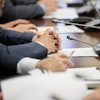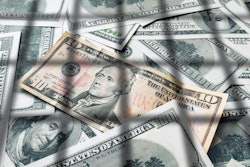
Reports suggest that more than half of dentists will eventually be victims of embezzlement. Dental practitioners can benefit from increasing their knowledge about embezzlement and how to deal with it effectively.
 David Harris, MBA, is the CEO of Prosperident.
David Harris, MBA, is the CEO of Prosperident.Approximately 3 in 5 dentists will find themselves the victims of embezzlement, according to a 2007 survey by the ADA and other surveys. The median amount an embezzler steals before getting caught is $145,000, according to a 2014 report by the Association of Certified Fraud Examiners. Embezzlement will cost dentistry more than half a billion dollars this year, according to internal calculations by Prosperident.
As a dental fraud investigation company, Prosperident examiners speak and interact daily with dentists about embezzlement. Through the course of our investigations, we gain appreciation of what doctors misunderstand about this subject.
With the aim of increasing dentists' knowledge about employee theft, here are the top eight embezzlement myths you should be aware of.
1. Embezzlers only steal cash
Actually, it is easy for an embezzler to pocket a check payable to you or any other form of monetary payment, such as credit card payment, electronic funds transfer, etc. Because I do not want to educate embezzlers who read this, I will not provide a step-by-step guide, but be assured that we see this on a daily basis.
2. My day-end reports always balance
Embezzlers control the entry of information into your practice management software and, thus, have the opportunity to manipulate your daysheet so that it balances to the residue after they steal. The sole significance of agreement between your daysheet and deposit is that it shows that your thief can add.
Therefore, while a review of the day-end report should be part of every dentist's routine, the fact that it is "in balance" does not mean that you are embezzlement-free.
3. Embezzlement is caused by hiring mistakes
While it is true that "serial embezzlers" can easily find work in a new office, the majority of our casework involves long-term employees who suddenly start embezzling. The typical embezzler has more than five years of seniority when they start stealing. These thieves know you and your habits well, and they use this knowledge to both commit their crimes and remain undetected, often for years.
4. My accountant will spot embezzlement
In its 2014 "Report to the Nations on Occupational Fraud and Abuse," the Association of Certified Fraud Examiners found that less than 5% of embezzlement was detected by external accountants. While it is tempting to find failure with the accounting profession for this low detection rate, some extenuating factors need to be considered.
First, there are several levels of assurance that your certified public accountant (CPA) can use when turning your information into financial statements. These include the following:
- Compilation: The accountant simply transmogrifies information without performing any analysis whatsoever.
- Review engagement: Limited analysis is done.
- Audit: Extensive analysis and verification are performed.
Understandably, higher assurance entails increased cost, which many dentists eschew. Accordingly, it is unlikely that you have mandated your CPA to conduct meaningful analytical review.
Second, the majority of embezzlement is concealed within a doctor's practice management software. While accountants often use the software's annual totals, in general they have no ability (or mandate) to review individual transactions inside your software.
Third, accountants' workflow has a very strong seasonality, and most dentists visit their CPA at their absolute busiest time. When accountants are struggling under the weight of deadlines, it is difficult to maintain sufficient proactivity to look for embezzlement.
5. Some practices are "safe"
Many dentists believe that certain characteristics of a dental office make it more or less susceptible to embezzlement, or that certain practices "attract" embezzlement. Personally, I don't think this is true. Embezzlement ultimately results from having a staff member who, either at the time of hire or at some later date, decides that stealing from you is the right action. In reaching this conclusion, they are consumed by their own needs and give almost no thought to your situation.
While a few of those "serial embezzlers" I referred to seek to get hired by specific practices that they decide are easy "marks," normally the victim is determined by where someone happens to be working when they decide to steal. This is almost a random event, and I do not see some practices being predisposed.
6. Embezzlement is uncovered by financial anomalies
“Multiple studies show that the majority of dental embezzlement is revealed because of behavioral, rather than financial, manifestations.”
Many dentists believe that financial irregularities, such as the day-end report not balancing to bank deposits, uncover the majority of embezzlement and that "watching the pennies" is the best way to keep tabs on embezzlement.
While I will never believe that financial awareness is a bad idea, multiple studies show that the majority of dental embezzlement is revealed because of behavioral, rather than financial, manifestations -- for example, reluctance to take vacation, or resistance to the dentist engaging outside advisors, such as practice management consultants. In my opinion, if dentists were better able to observe and classify embezzlement-like behavior, embezzlers would find themselves caught much more quickly.
7. Honest people can catch thieves
When we hire fraud examiners, the most important attribute we seek is the ability to replicate the criminal's thought process. Unless someone can think like a criminal, they have almost no hope of catching one.
8. Reducing the opportunities for embezzlement will lesson my risk
Of all of these myths, this is the one that is most strongly held by dentists and, ultimately, the most damaging. Most of us believe that reducing the opportunity for crime will result in less crime. While this is certainly true for other kinds of criminal behavior (for example, alarms are quite effective at reducing the probability of burglary), this "reduction of opportunity" concept does not transfer well to embezzlement.
The alarm system does not prevent crime; it simply redirects it to some other victim. However, with embezzlement, the victim is predetermined, and what the embezzler can control (and, therefore, what the doctor can influence) is not the choice of victim but rather the methodology employed. Reduction of opportunity strategies are expensive either monetarily or in the doctor's time commitment.
David Harris, MBA, is a licensed private investigator, certified fraud examiner, and the CEO of dental embezzlement examination firm Prosperident.
The comments and observations expressed herein do not necessarily reflect the opinions of DrBicuspid.com, nor should they be construed as an endorsement or admonishment of any particular idea, vendor, or organization.


















